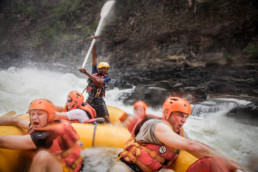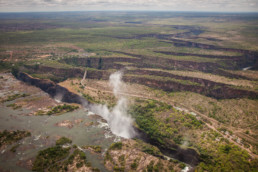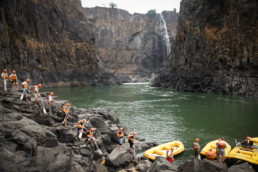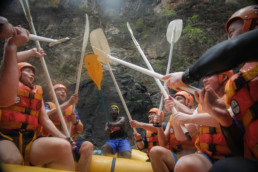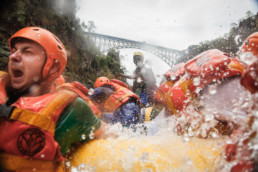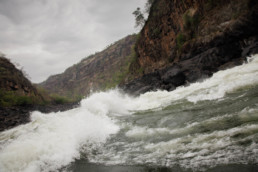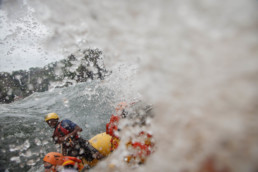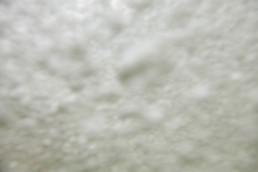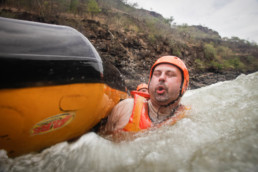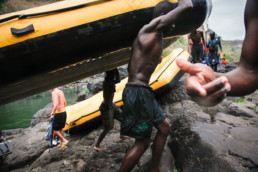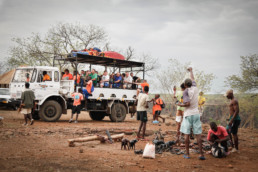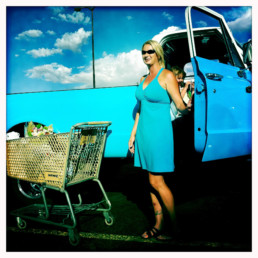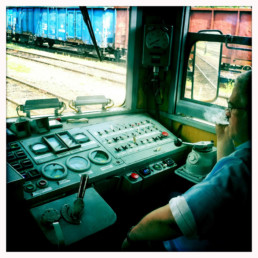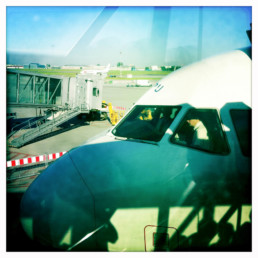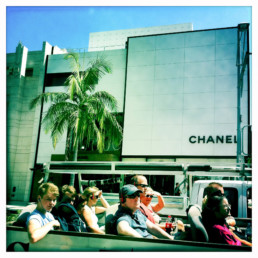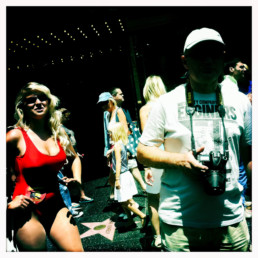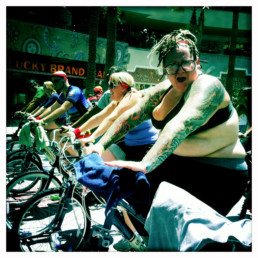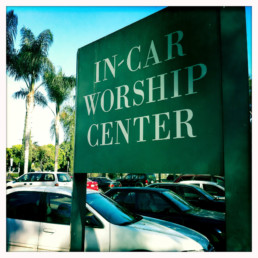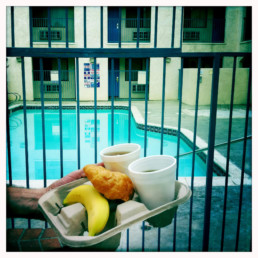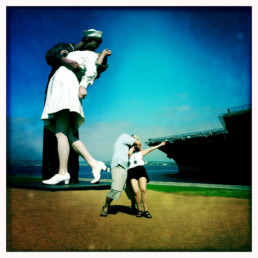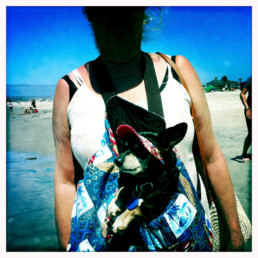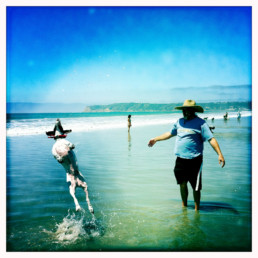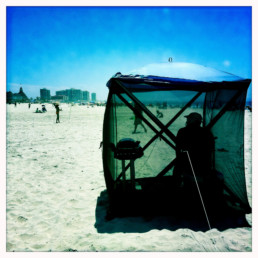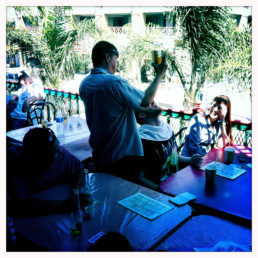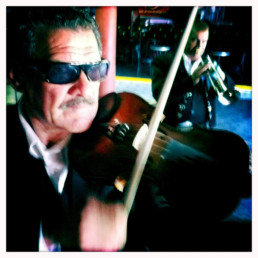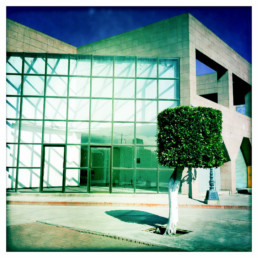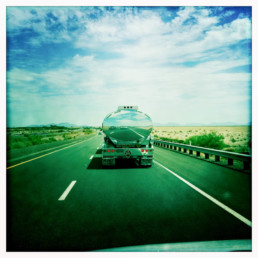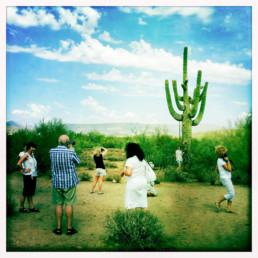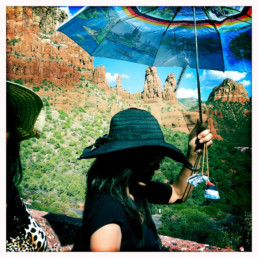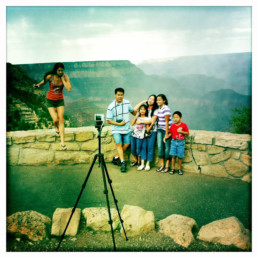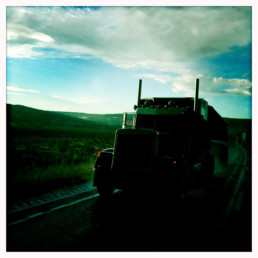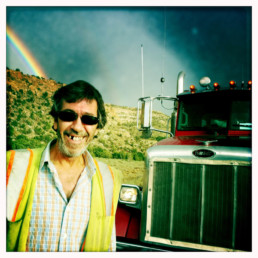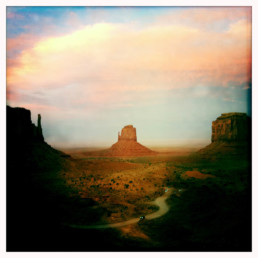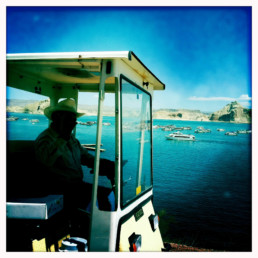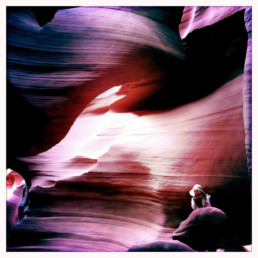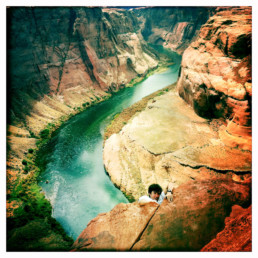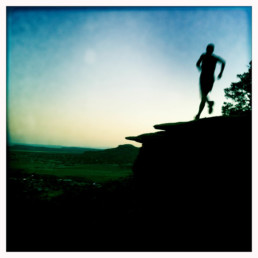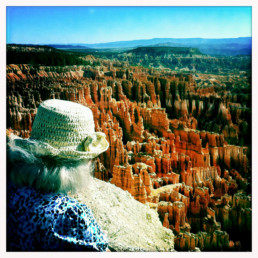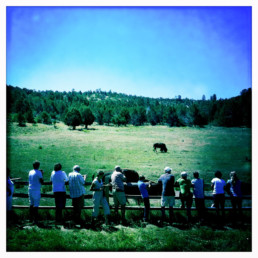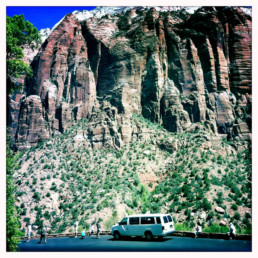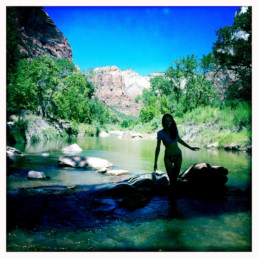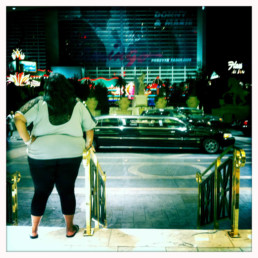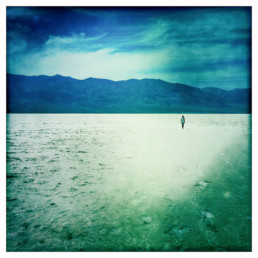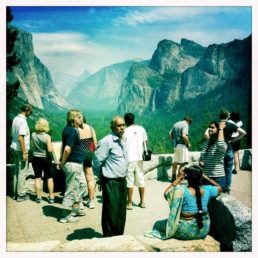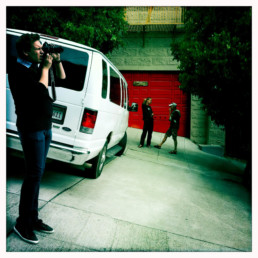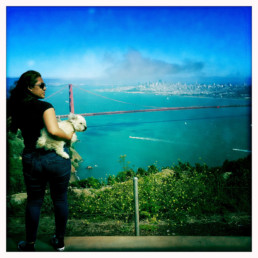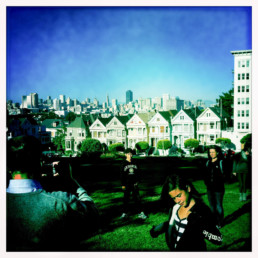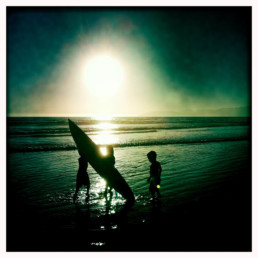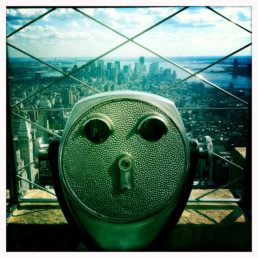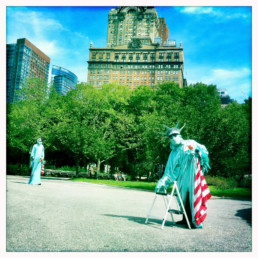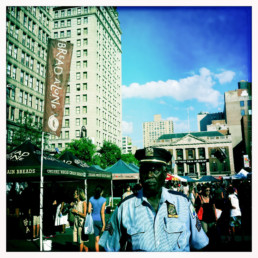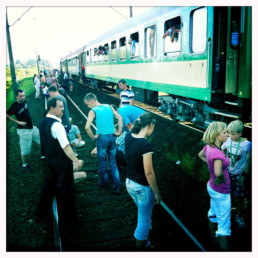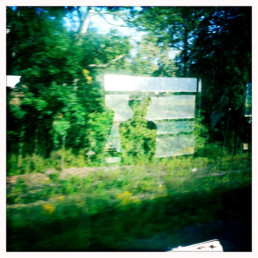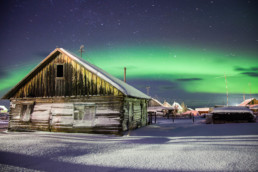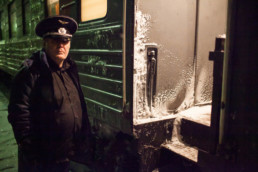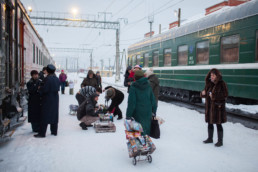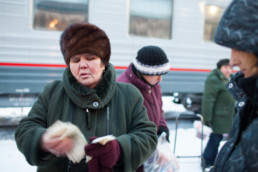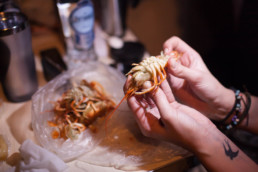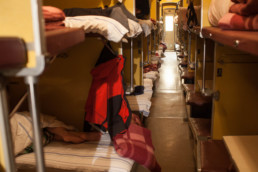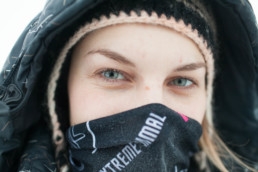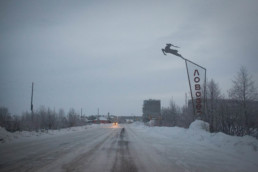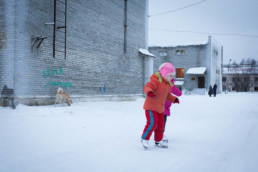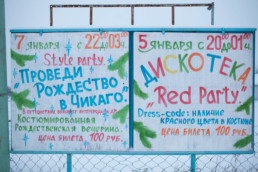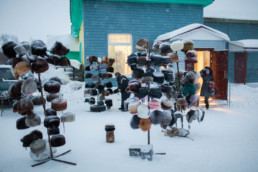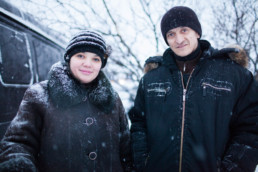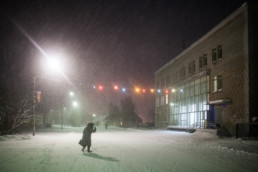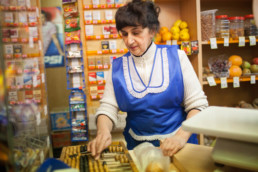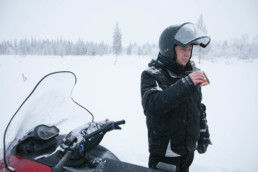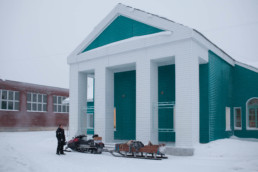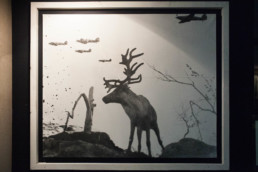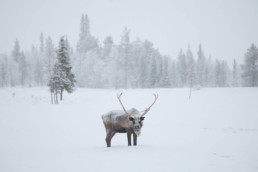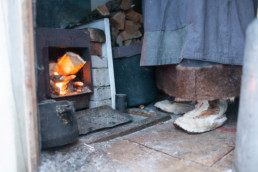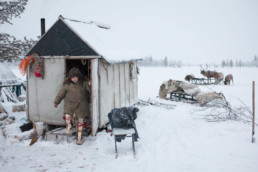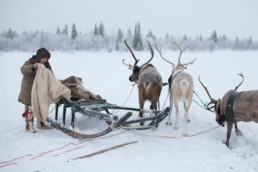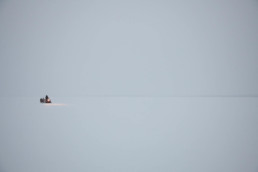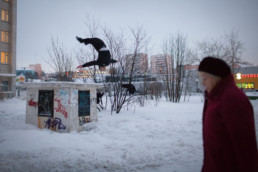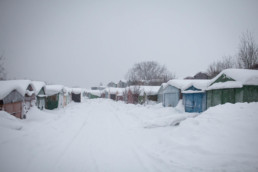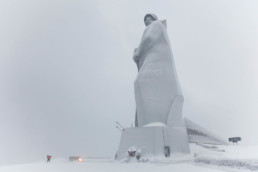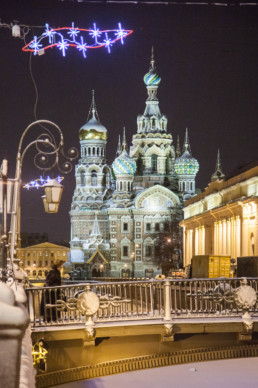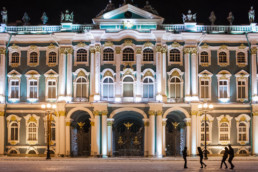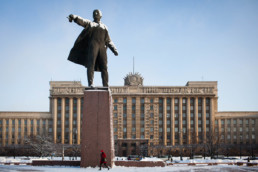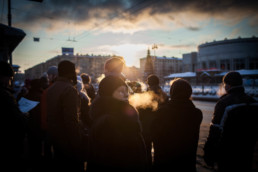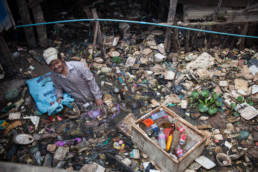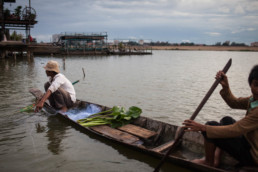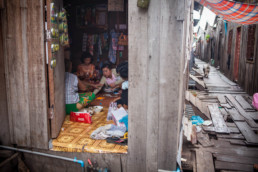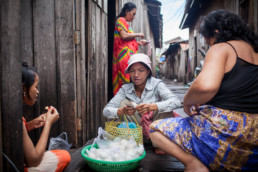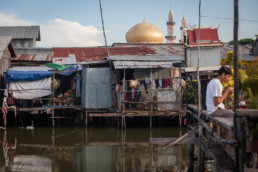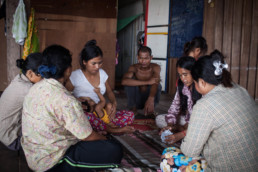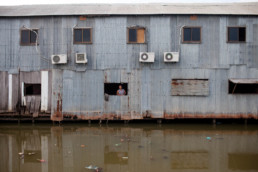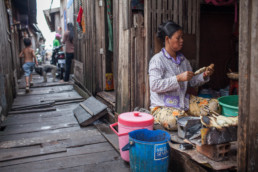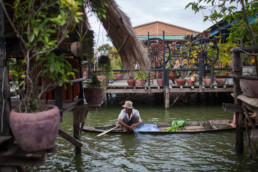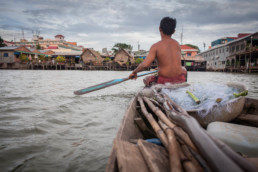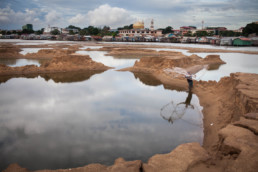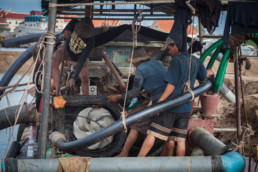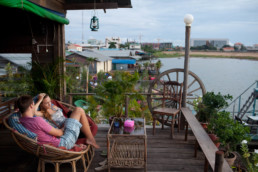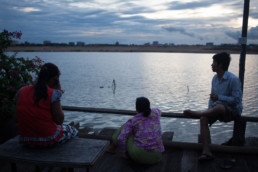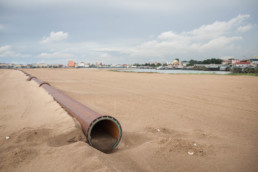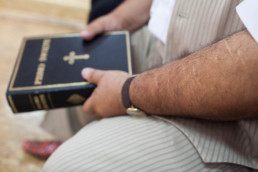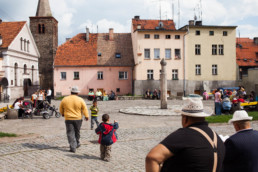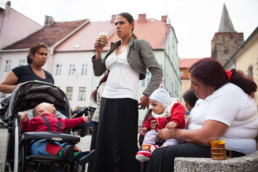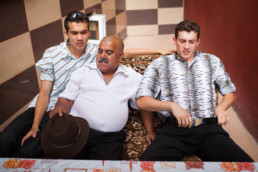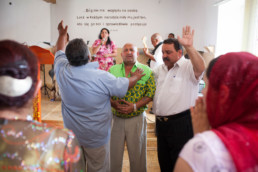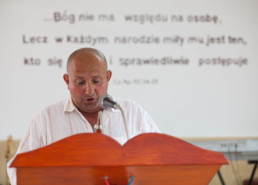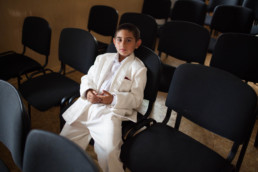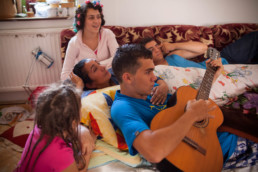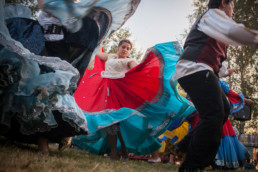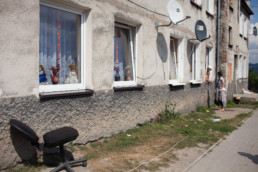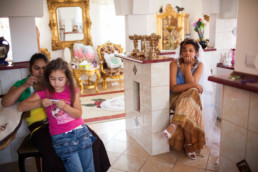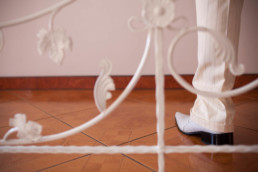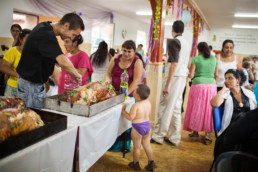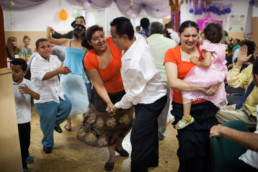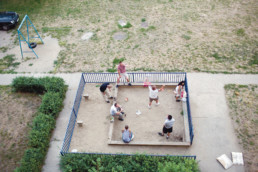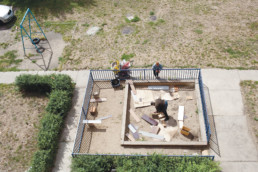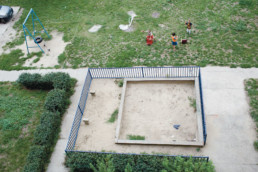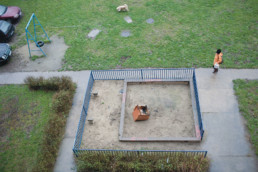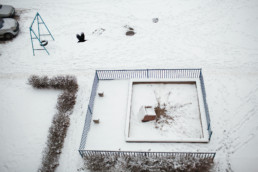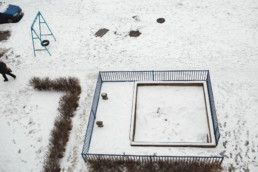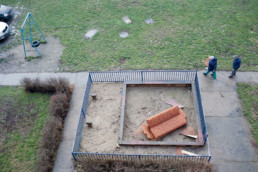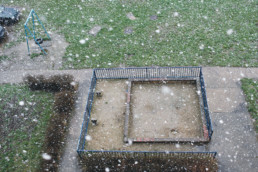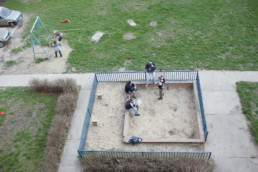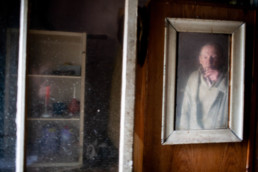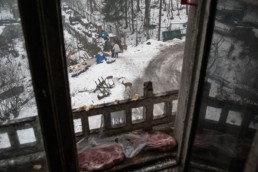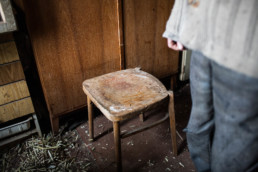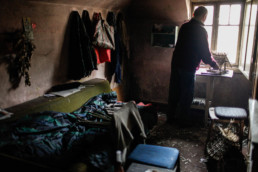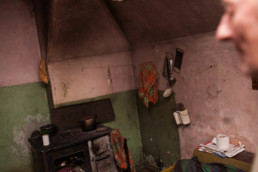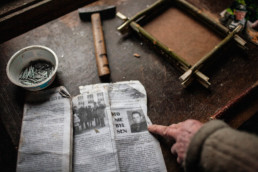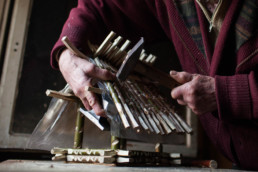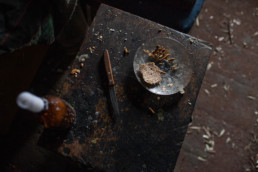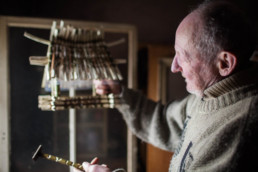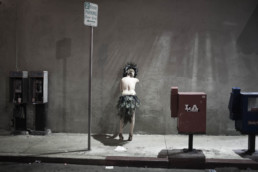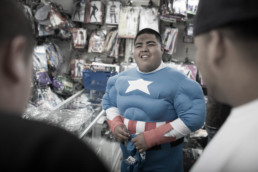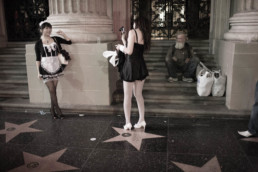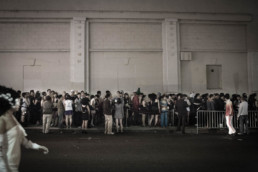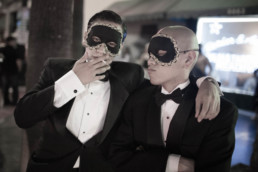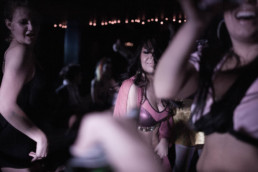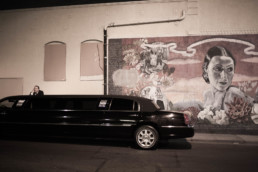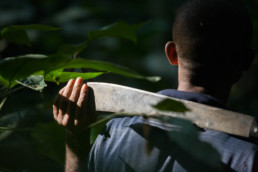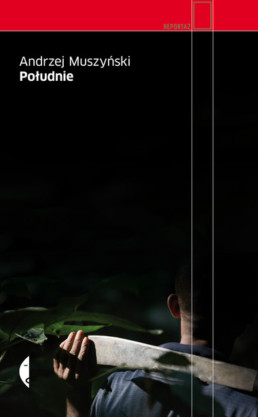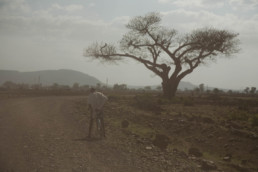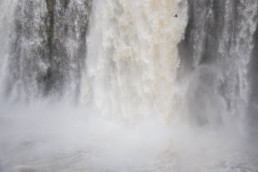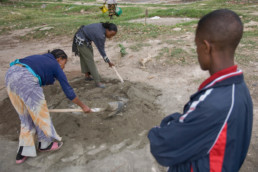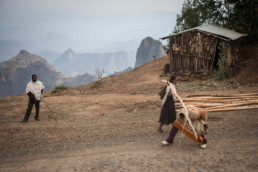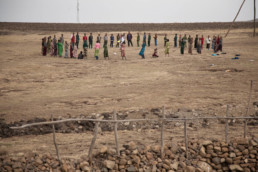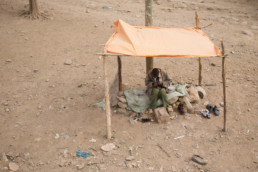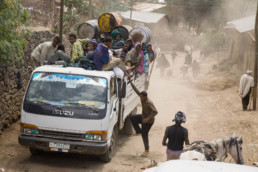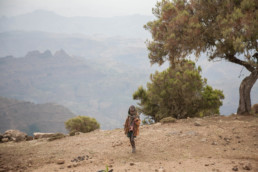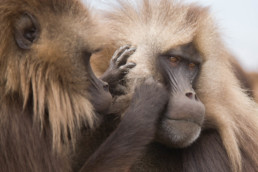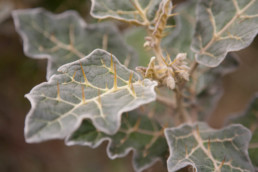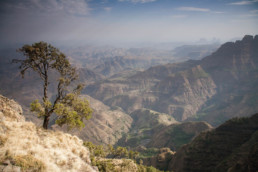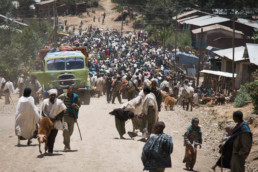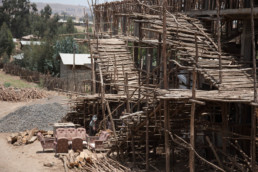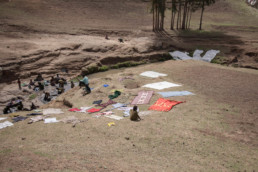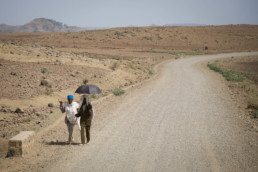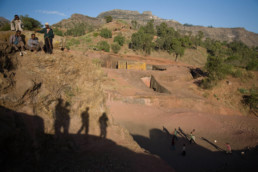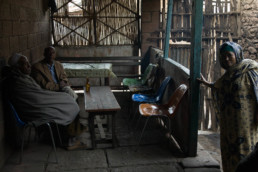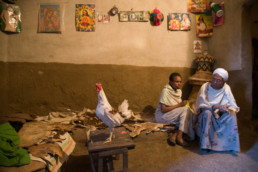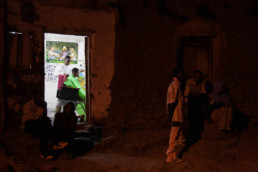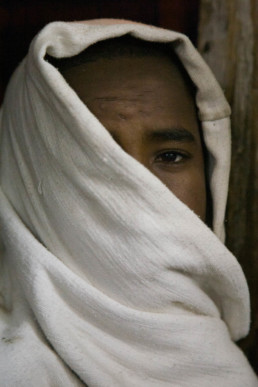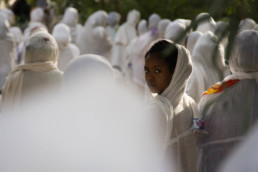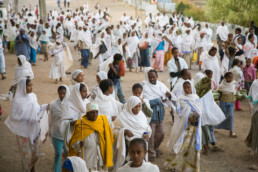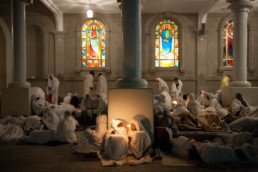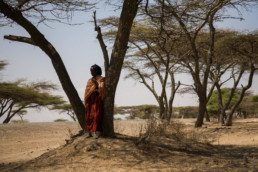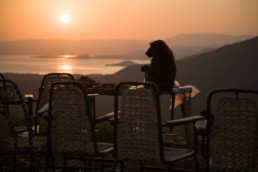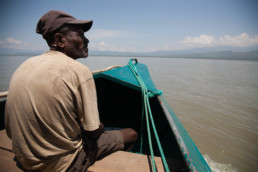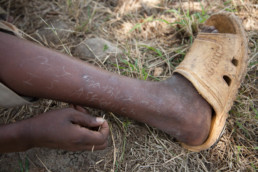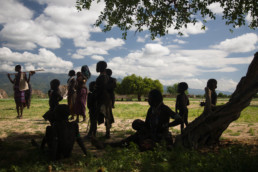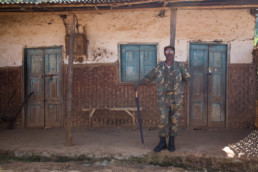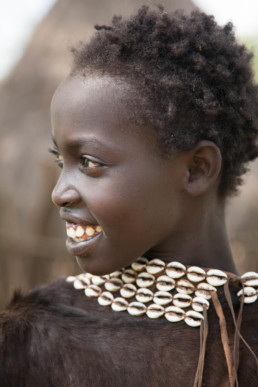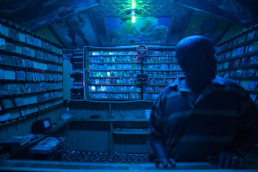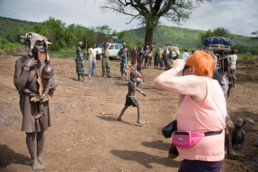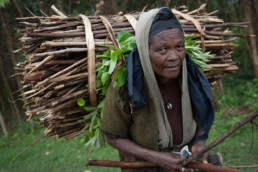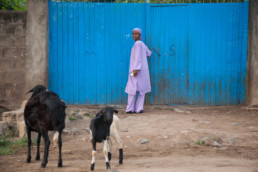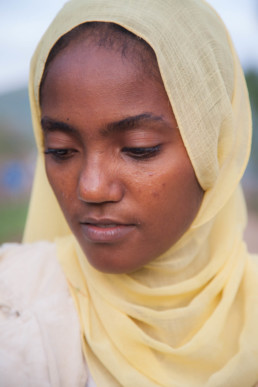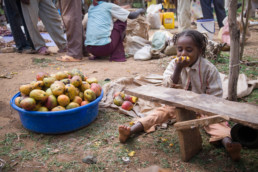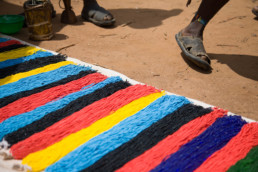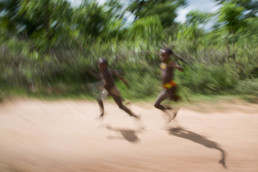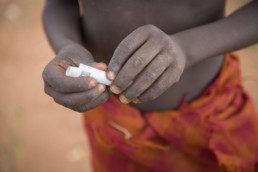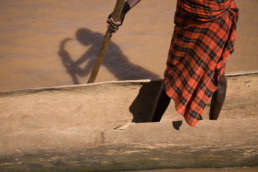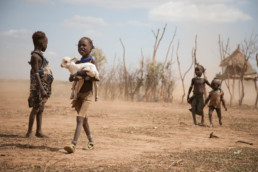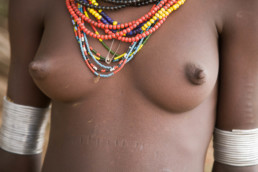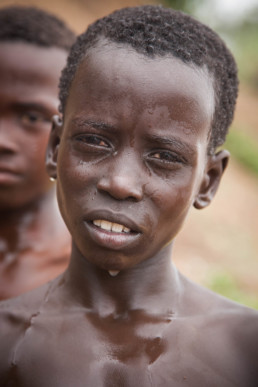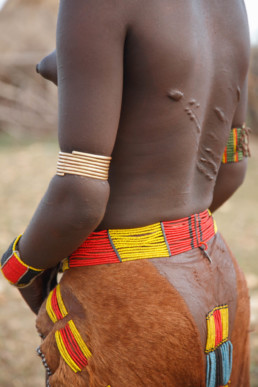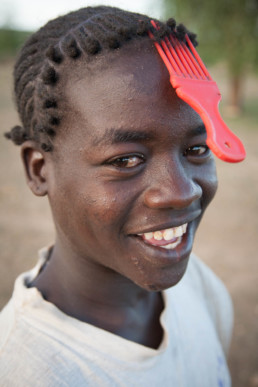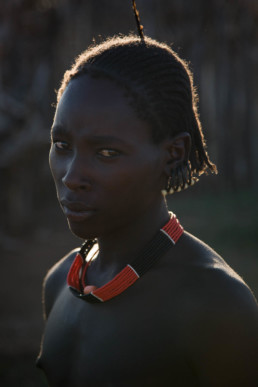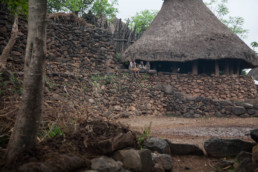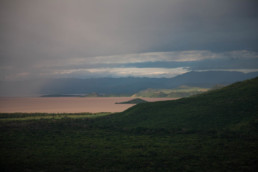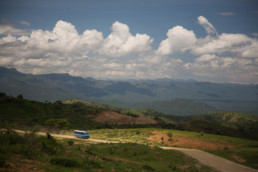Extreme rafting on Zambezi
Victoria Falls, Zimbabwe. 2011.
One of the four most dangerous whitewater rafting sites in the World open for tourists.
At the time of my experience, the Zambezi River was especially hardcore due to the dry season. There was not much water, so the river surface was closer to the rough and rocky bottom. This made the numerous cascades more wild and dangerous.
I was a tour-leader of an incentive expedition. Rafting on Zambezi was one of the highlights of the trip. When we were descending into the deep gorge of Zambezi River, just next to Victoria Falls, some men were playing it tough and arogant. But during the really extreme course they were the first ones willing to climb up the steep walls of the gorge just not to continue on rafting on the insanely wild Zambezi River. Women were the ones having a blast and fearing the least the extremely wild course.
Miraculously I didn’t loose my camera, although several times I was sure it was already gone.
Publication
The story was published in National Geographic Traveler Poland (1/2013).
You can download PDF here.
SW USA
USA. 2011.
In my seven years long career as tour-leader one of the routes I’d been doing most often was an exhausting trip around South-West US. I was the tour-leader, driver, guide, soulmate, drink mate etc.
On one of the trips I picked up additional challenge. In 2011 iPhones eventually started taking photos of decent quality. I decided I would not take my big camera (which I hardly had the chance to use on these trips anyway), but the smartphone. I liked photos processed in hipstamatic app, so this was my set for the trip.
This is the daily life of a tour-leader in one of the most scenic parts of the World. Hipstastyle.
The route
Starts in Kłodzko, Poland. On to LA, San Diego, Tijuana, Flagstaf, Sedona, Grand Canyon, Monument Valley, Page, Zion Canyon, Bryce Canyon, Las Vegas, Sierra Nevada, Yosemite, San Francisco, Monterrey, LA… and back from Warsaw to Kłodzko with a train, that broke down.
Chasing northern lights
Kola Peninsula, Russia. 2011
A trip to the Kola Peninsula in Russia to watch the spectacle of northern lights.
The show wass truly amazing and worth the effort. Experiencing the North in winter was as much of an experience though. From Lovozero – a little village lost in Kola Peninsula, through Murmansk – the biggest city north of the Arctic Circle in the World – to the classic St. Petersburg – it was a feat to watch the everyday life unfold in these rough conditions with hardly any daylight and everything frozen like a rock.
Awards
The featured photo was awarded 2. Prize in Nature of BZWBK Press Foto 2012.
Publications
- National Geographic Traveler 03/2011 – download PDF.
- National Geographic Adventure Book.
Boeung Kak – the Vanishing Lake
Phnom Penh, Cambodia. 2009.
Until recently, Boeung Kak – an area centrally located in the capital city of Cambodia, Phnom Penh – was covered by the largest urban lake. Residential areas, businesses, restaurants, hotels, embassies and other local businesses surrounded the lake. It was a backpackers’ favourite spot for its plentitude of hostels with porches overlooking the lake
In 2007 the Cambodian government made an agreement to lease the land to a corporation. This resulted in the filling of the lake with sand in order for the company to build condominiums and other complexes on the land. The change of the lake and the area surrounding the lake has had major social and environmental impact. Several non-governmental organizations in Cambodia as well as international actors have protested the destruction of Boeung Kak.
As of 27 February 2012 Boeung Kak Lake is gone being entirely filled with sand.
Awards
The featured photo was nominated to Grand Press Photo Contest 2009.
Pentacostal Romas
Bystrzyca Kłodzka, Poland. 2009.
“We are facing harrasments from two sides. One, because we are Gypsy, two, because we are Pentecostal, which is believed to be a sect” – says Andrzej Walawski, pastor of congregation of Bystrzyca. “But more and more community members convert”.
I accompanied the group in their daily life for several months until a young couple’s wedding.
The video cameraman at the wedding said “I was at a couple of weddings of white folks, where there was no alcohol. After few hours of heavy atmosphere the parties died. And here? I’ve never seen a party like this!”
Sandbox
Wrocław, Poland. 2008-2009.
A year of life in and around sandbox on one of polish backyards. The series was initiated by an episode of me being attacked by the youngsters after they found I was taking photos of them drinking in the what should be a playground for children.
After a year and grotesque moments, the sandbox again served as a drinking spot, but this time for younger kids.
Exhibition
pARTer gallery, Kłodzko, Poland. 2009.
Tadeusz
Poland. 2009
“It wasn’t a dream” reads the title of a short article in a local newspaper. Tadeusz shows it to me with pride. After the WWII he was admitted to the most prominent polish military college.
“A dream for all the boys” – he emphasised.
His life had a different destiny though. In his last years he lived in an attic creating meticulously handcrafted birdhouses. Those birdhouses could be found in many local gardens. But nobody knew the struggle Tadeusz was living through.
Minkebe Expedition
Gabon. 2008.
Gabon. Three Poles. Six Bantu Pigmees. 21 days of hike through virgin gabonese jungle. Traverse of the Minkebe National Park – the grandest refuge of wild elephants in the world.
The expedition was supported by World Wildlife Fund.
Awards
- Kolosy 2009 – honorable mention
- Nominee to National Geographic Travelers 2009
Publications
National Geographic Traveler (2009).
Download PDF.
Ethiopian diversity
Ethiopia. 2008.
I was sent to Ethiopia with a group of tourists as an assistant to Jola, a very skilled tour-leader. As she was excellent in leading the group, I could focus on the vibrant and diverse life. As we drove through the North with a bus, I was allowed to sit on its roof. It was an amazing vantage point.
We traveled across most of Ethiopia.
I went back to Ethiopia a year later as the main tour-leader, thus I didn’t have the chance to take photos. But the change of life within that year was tremendous. Within a year China managed to pave most of the roads in the North and provide mobile network around the whole country. I haven’t been in Ethiopia since 2009 but from what I hear, Ethiopia has become an economic colony of China.
